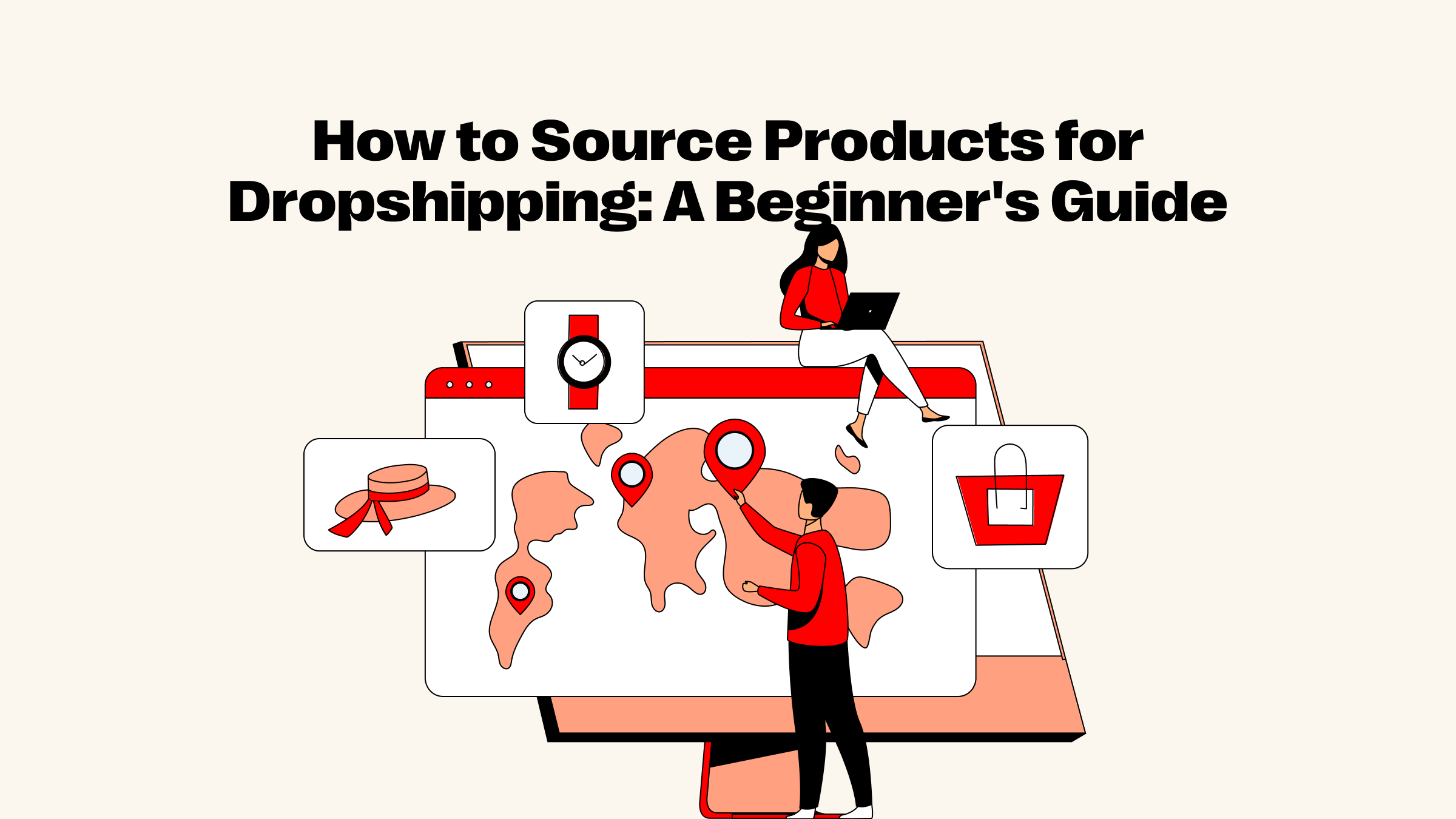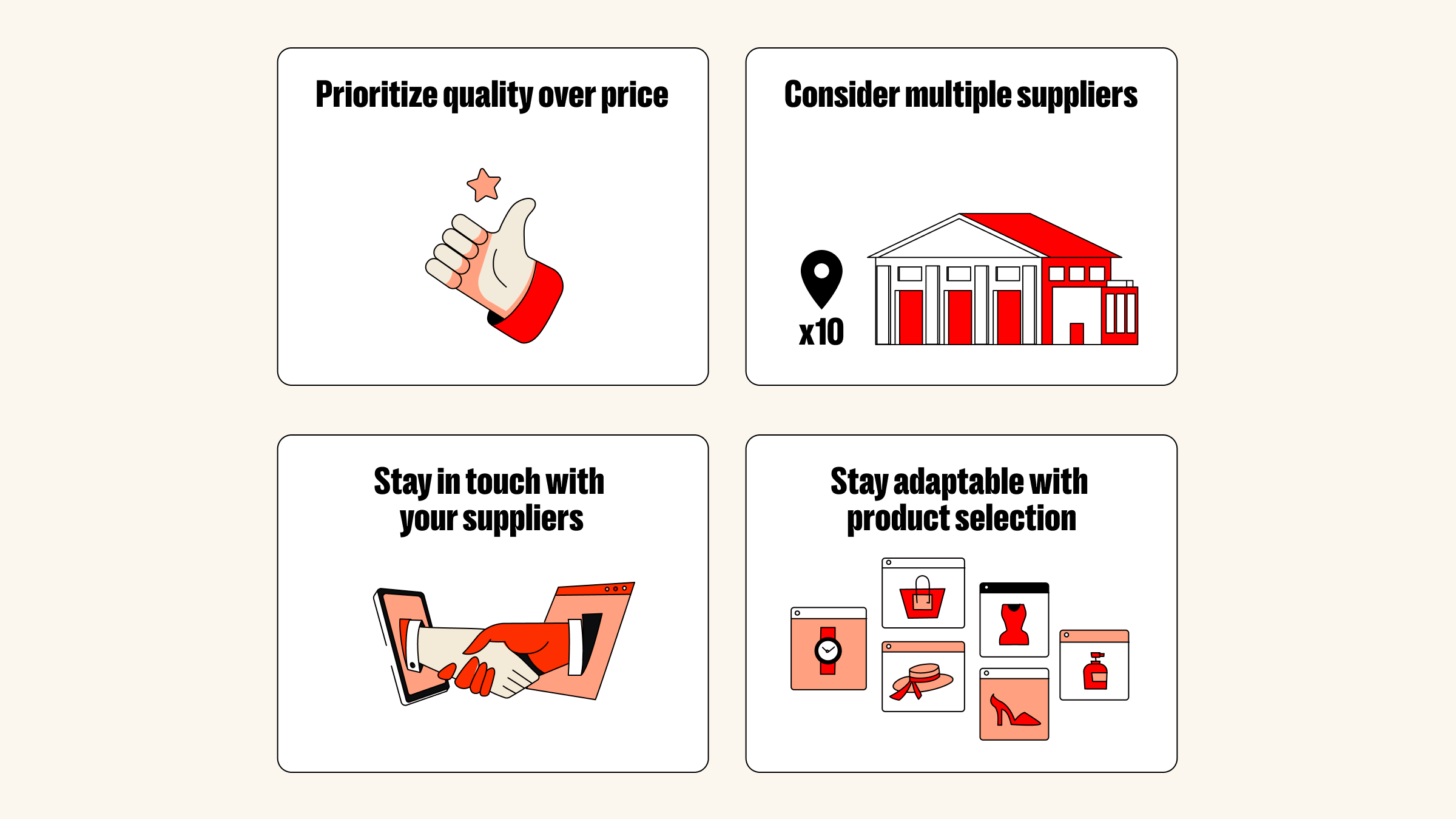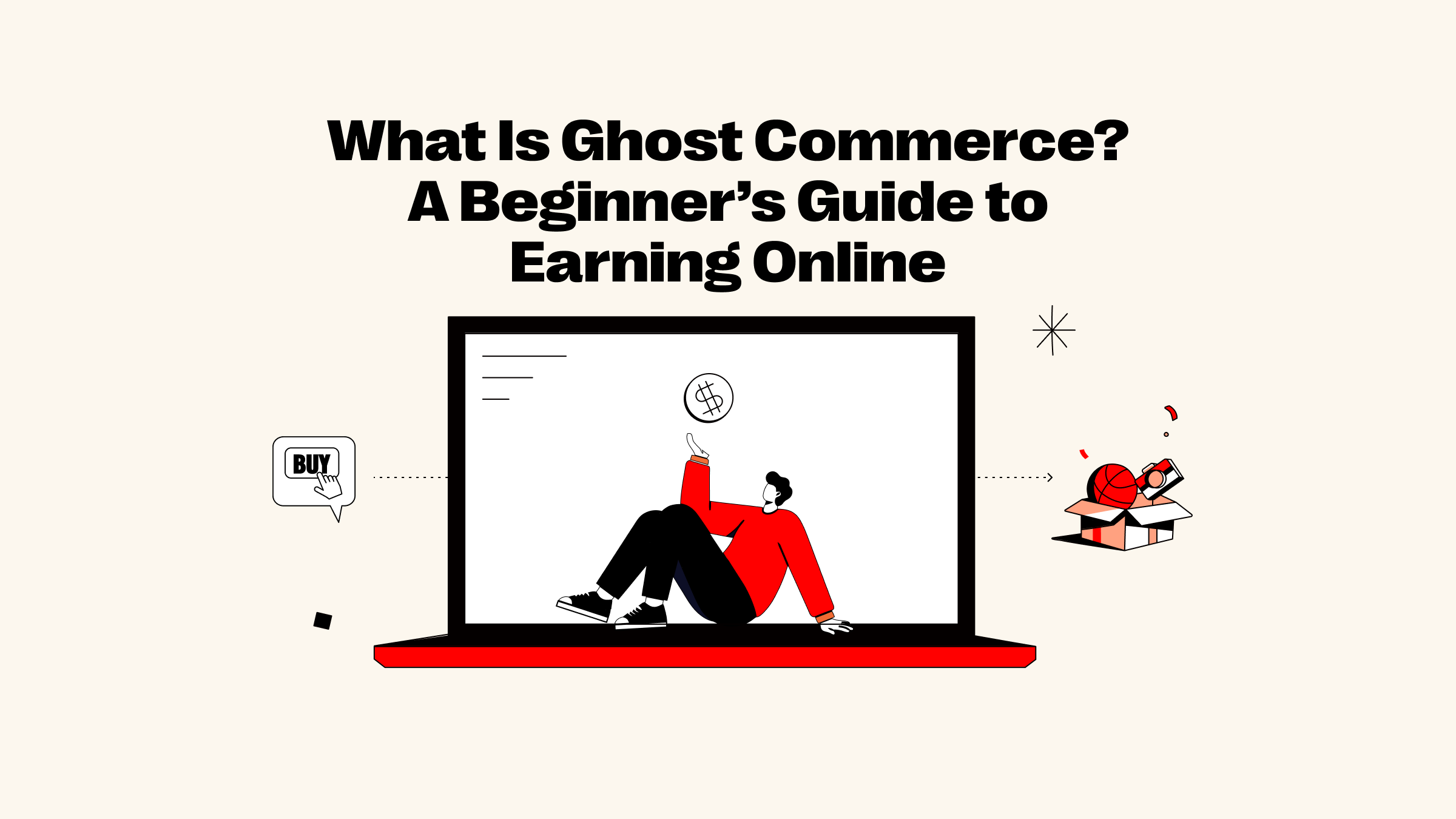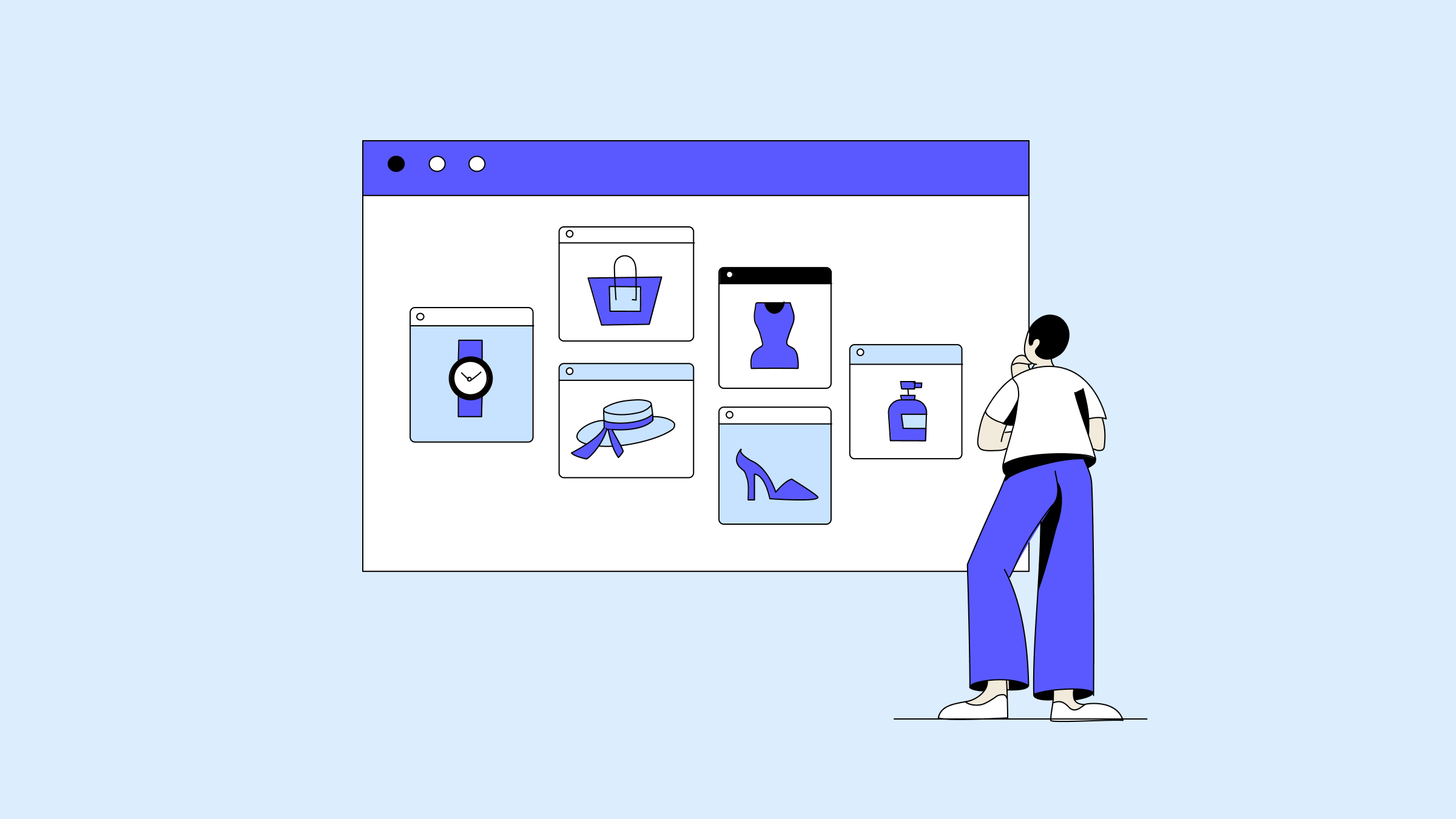Scrolling through endless product listings and casually tapping “add to store” used to feel like the norm. But as competition heats up, those shortcuts rarely lead to long-term wins. Today’s top-performing dropshippers take a more meticulous route, sourcing products that not only sell but also build trust. If you’ve been wondering how to source products for dropshipping the smart way, this guide walks you through practical, step-by-step methods to help you source with intention and confidence.

What is product sourcing?
Product sourcing refers to the process of finding and securing goods to sell in your store. In dropshipping, this means partnering with third-party suppliers who handle inventory and ship directly to your customers. Since you won’t physically hold stock, your sourcing strategy becomes the linchpin of your entire operation. A poor choice can lead to delays, unhappy buyers, and returns. A smart one? Repeat business and brand growth.
4 Different product sourcing methods
There’s no one-size-fits-all approach to sourcing. Each method has its perks and pitfalls. Below are four practical ways to source products for your dropshipping business, each suited to different needs.
Find from the Exhibition

Industry exhibitions offer firsthand access to manufacturers, making them a powerful sourcing method for serious dropshippers. Events like the 137th Canton Fair in 2025 showcase thousands of suppliers across every imaginable product category. Walking through booths, you can touch, test, and negotiate directly—all in one place. This method is ideal for building long-term partnerships and discovering unique, high-quality items before they saturate online platforms.
Pros:
-
Direct contact with factory representatives
-
Early access to trending new products
-
Better pricing through face-to-face negotiation
-
Real-time inspection of product quality
Cons:
-
Requires international travel and planning
-
Not budget-conscious
-
Time-consuming to attend and follow up
-
Language barriers may limit clear communication
Buy from a dropshipping supplier
One of the most convenient ways to start is by sourcing from established dropshipping platforms. Well-known options like AliExpress and CJdropshipping offer access to an enormous catalog of products across countless categories. On AliExpress, for example, daily product recommendation lists like Dollar Express, SuperDeals, and Big Save highlight trending items with local shipping options, often delivered within 2–8 days.

If it’s your first time sourcing and you're unsure how to compare or verify suppliers, a SaaS platform like Shoplazza can help you get started smoothly. Not only does it simplify the process of building a professional eCommerce website, but it also connects you to a well-developed one-piece dropshipping supplier ecosystem.
With Shoplazza, you can:
? Easily connect with multiple suppliers at once
? Test products across different niches
? Sync inventory and orders in real-time
? Consolidate shipping and fulfillment workflows in a single dashboard
? Access a streamlined platform for creating and managing your branded online store

Pros:
-
Low barrier to entry for beginners
-
Wide variety of ready-to-ship products
-
Easy integration with dropshipping platforms
-
Flexible supply from multiple sources
Cons:
-
Product quality varies across suppliers
-
High competition on popular items
-
Some listings may lack exclusivity
-
Limited control over branding or packaging
Source from a wholesaler
Sourcing products from a wholesaler for dropshipping means buying directly from a manufacturer or distributor, often at a lower cost but typically requiring larger orders. Now, you may ask, "Wholesalers often sell in bulk, how can I dropship products from them?" Here's the clarification: the "larger orders" typically refer to large MOQ or the high product value, which is common when working with wholesalers.
In fact, sourcing larger and bulkier goods like furniture, home appliances, or equipment directly from wholesalers can be quite beneficial. Due to their higher unit prices, purchasing these items in bulk can significantly reduce the per-unit cost, making them more cost-effective. This method works well for bigger, higher-priced items where unit price and profit margins can be higher. On the other hand, smaller or lighter products, such as clothing accessories or electronics, are typically better suited for suppliers, where handling and shipping are simpler and more affordable.
Pros:
-
Potential for higher profit margins
-
Ability to customize packaging and branding
-
Ideal for large or heavy products
Cons:
-
Not ideal for smaller, lightweight products
-
Limited flexibility for product variety
Hire private sourcing agents
Have the heart but not the strength to juggle multiple suppliers or manage various SKUs? A private sourcing agent could be the solution you're looking for. These professionals assist with product sourcing, supplier management, and even quality checks, making the process smoother for you. If you're working with several dropshipping suppliers or dealing with a large number of products, an agent can simplify these tasks.
If you're using platforms like Shoplazza to run your store, the platform can further enhance your experience by offering services such as finding suppliers, warehouse management, customer handling, and logistics. These features, along with a sourcing agent, make the whole process a lot more manageable.
Pros:
-
Simplifies managing multiple suppliers
-
Reduces time spent on sourcing
-
Offers access to expert suppliers
-
Helps with product quality assurance
-
Supports seamless communication across suppliers
Cons:
-
Agent fees can add up
-
May lead to less direct control
-
Dependence on agent reliability
-
Limited control over final pricing
Step-by-step guide to source quality products
Now that you have a general understanding of sourcing methods, it's time to break down the process. Here’s a step-by-step guide to help you source quality products efficiently for your dropshipping business.

Research your products and niche market
Before you select and analyze your suppliers, you may want to first conduct thorough research on your products and niche market. This ensures you're sourcing items that align with customer demand and trends.
Browse social media and trend publications
Current trends are constantly evolving, and staying on top of them is crucial for sourcing the right products. To browse strategically, you may start by searching relevant hashtags on Instagram and TikTok that align with your niche. For example, if you're in the fashion business, you can explore tags like #StreetStyle or #SustainableFashion. On Pinterest, you can create boards based on your product category and see what pins get the most engagement, helping you identify products that are gaining popularity.
In addition to social media, trend publications like Trend Hunter offer curated lists of the latest trends across industries. It covers a wide range of categories, from fashion to tech, giving you insight into emerging trends before they hit the mainstream.
Use product research tools
Product research tools are invaluable when trying to find trending products or understand consumer demand. Google Trends is a great place to start. Just type in a product or keyword, and you can track its search volume over time and across different regions. This is useful for spotting trends early, especially if you're looking to jump on something that’s growing in popularity.

Another powerful tool is Semrush. It helps you dig deeper into what your competitors are doing. By analyzing their keywords and rankings, you can spot product opportunities that aren't too saturated. It’s also great for finding out which products are driving the most traffic to other stores in your niche.
Survey your existing customers
If you already have some business experience or a small group of customers, don’t overlook the goldmine of insights they can offer. These early buyers can help guide your next product choices more accurately than guesswork ever will.
You may consider their pain points:
-
What are they struggling with?
-
What do they often ask about or request more of?
-
What product features do they often criticize?
-
What alternatives are they currently using instead?
-
Have they left items in carts without purchasing? Why?
-
Do they mention specific occasions or needs unmet by current options?
You can gather feedback through short surveys, follow-up emails, or even direct messages. Ask what products they wish you had, or which items they’ve struggled to find elsewhere. Their responses can help you fine-tune your offerings, build loyalty, and reduce the risk of sourcing the wrong products.
Explore online marketplaces
Online marketplaces are treasure troves for spotting product opportunities, if you know where to look. Tools like AliExpress’s Up Assistant can help you analyze product popularity, pricing trends, and user feedback in real-time. On Amazon, checking the Best Sellers, Movers & Shakers, and New Releases sections gives you a pulse on what’s in demand across categories.
Pay attention to:
-
Product ratings and number of reviews
-
Seller rankings and delivery speeds
-
Frequently bought together and customer Q&A sections
-
Seasonal spikes or sudden upticks in orders
Analyze potential suppliers
Before you commit to any product or supplier, it’s crucial to take a closer look at who you’ll be working with. A reliable partner can make or break your dropshipping success.
Use research engines
One of the easiest ways to start analyzing suppliers is by using search engines. A simple Google search like “niche + dropshipping supplier” or “product name + wholesale/supplier” can uncover a list of potential partners. Be specific with your keywords and include filters like region, pricing terms (e.g., “no MOQ”), or product category.
Then, try different combinations and dig beyond the first page—credible suppliers often don’t invest heavily in SEO but still offer solid services. If you find yourself buried under too many options, create a shortlist using a spreadsheet. Note each supplier’s website, product range, response speed, and contact details. This makes it easier to compare them side by side and identify who’s worth reaching out to.
Use supplier directories
Supplier directories are a reliable way to find vetted manufacturers, wholesalers, and dropshipping partners. Sites like SaleHoo, Doba, and Worldwide Brands list verified suppliers across different industries, helping you cut through the noise and avoid scams. These directories often include filters by region, product category, and minimum order requirements.
Besides directories, B2B platforms like Alibaba and Global Sources are also great for sourcing. You can browse thousands of product listings, read reviews, check certifications, and message suppliers directly. Just remember to vet each supplier carefully—look for trade assurance and years in business before moving forward.
Contact your supplier
After narrowing down potential dropshipping suppliers, the next step is reaching out. You can begin with a friendly but professional message that clearly states you’re looking to dropship. Then mention the products you’re interested in, ask about dropshipping terms, fulfillment process, handling time, return policies, and whether they offer branding or custom packaging.
Don’t forget to clarify if they support one-by-one order fulfillment and ask how they handle tracking updates. A supplier’s responsiveness and clarity in communication often reveal how reliable they’ll be when orders start rolling in.
Request a sample to test quality
Once you've chosen the supplier you expect to work with, it’s time to request a sample. This is a crucial step to ensure that the product meets your standards before you start selling it to your customers. Testing the sample lets you check the quality, packaging, shipping speed, and the overall experience you’ll be offering your customers. It’s a great way to spot any discrepancies between what’s advertised and what’s actually delivered.
If you're aiming to build a brand, focus on the finer details—material quality, finishes, labeling, and packaging. Acting like a customer, you may treat the sample like it’s something you’d buy for yourself. It’s the best way to catch any issues early on, so your store’s reputation stays intact.
Import products into your online store
Once you’ve selected your products and suppliers, the next step is to import them into your online store. If you’re using a platform like Shoplazza, this process becomes incredibly simple. With just one click, you can import products directly from third-party platforms and sync them to your independent online store. This allows you to seamlessly launch your dropshipping business without the hassle of manual uploads.

After importing your products, Shoplazza also supports order management and fulfillment, streamlining the entire process. When customers place orders, the system automatically notifies your supplier, who will handle packaging and shipping directly to your customers. This saves you time and eliminates the need for you to manage inventory or logistics, letting you focus on growing your business.
4 Tips for sourcing dropshipping products
Products and suppliers are not the only key factors in dropshipping success. To truly excel, you need to implement smart strategies that optimize your product sourcing and build strong supplier partnerships. Here are four valuable tips to help you along the way.

Prioritize quality over price
Some dropshippers may hold the misconception that dropshipping is just a one-shot business where cutting costs is all that matters. But here’s the truth: it’s a long-term game, and quality should always take precedence over price. Sure, the lowest-priced products may look tempting, but if the quality is poor, you’ll be dealing with returns, negative reviews, and unhappy customers. So, you should focus on products that offer great value, not just the lowest price, and you’ll build a loyal customer base. Quality is what keeps people coming back.
Consider multiple suppliers
Ever heard the saying, “Don’t put all your eggs in one basket?” Well, the same goes for dropshipping suppliers. It’s risky to rely on just one. If something goes wrong with that supplier—whether it’s stock issues or shipping delays—you’re left scrambling. By having multiple suppliers, you create a safety net. It also lets you compare options and make sure you’re offering the best deals to your customers.
Stay in touch with your suppliers
Don’t just contact them when you need something. You should make it a point to check in regularly. This way, you stay on top of stock, potential delays, or any pricing changes. Plus, if they know you're a reliable partner, they might offer you better deals or even exclusive products. Communication is the secret sauce to smooth dropshipping!
Stay adaptable with product selection
The market’s always changing, right? One minute, a product is flying off the shelves, and the next, it’s yesterday’s news. That’s why staying adaptable with your product selection is a big win for your dropshipping business. Flexibility means you can jump on trends early, clear out slow movers, and keep your store fresh and relevant. It also helps you reduce risk if one product tanks, you’ve got backups ready to go.
Conclusion
From exhibitions and supplier platforms to private agents and research tools, this guide showed you how to source products for dropshipping in a thoughtful, effective way. Instead of relying on guesswork or random listings, take charge of your supply chain with the right tools and partners—your store’s success depends on it. Ready to source smarter and sell better? Start building your foundation today.


